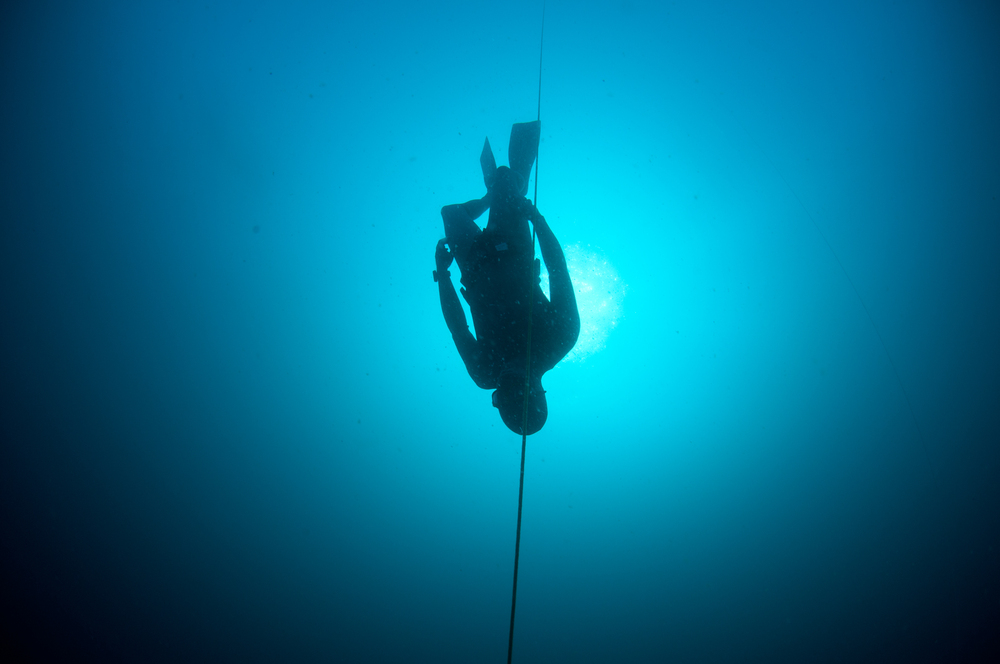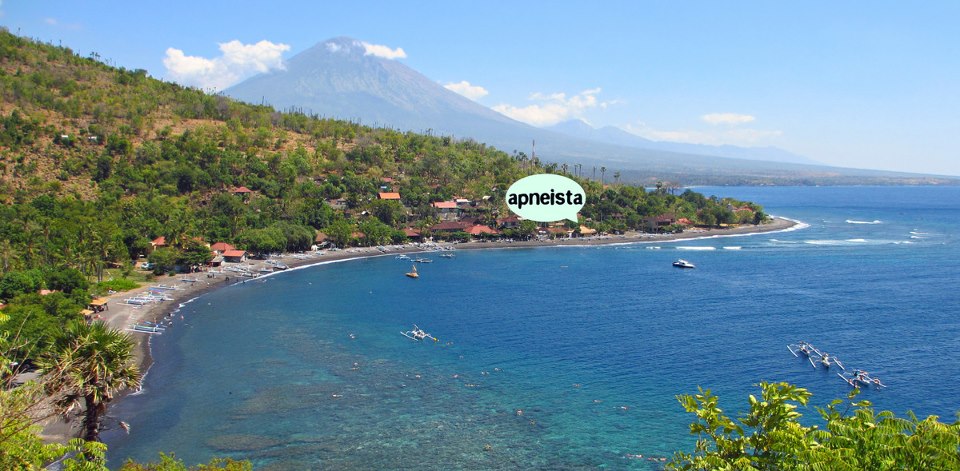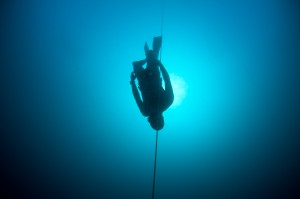
Sep 11, 2014 | Freediving, Meditation, Yoga
‘When the doors of perception are cleansed man shall see things as they truly are, infinite’ William Blake
Why learn Vipassanna ?
In the past month 2 more of our freediving instructors have challenged themselves with the practice of Vipassana. There are different approaches to vipassana, both of them enrolled for the SN Goenka course, a particularly full on and difficult introduction.
Both of our instructors are pretty adventurous people; but what follows it is an explanation of why a ‘normal’ person might subject himself to a vipassana course.
Lets start with looking at two Buddhist practices, Mindfulness and Vipassana. Aside from Tantric Buddhism, elements of both are a part of most streams of buddhism, yet they are not religous rite or ritual.
Mindfulness
Being in the now; mindfulness is concentrated awareness of the moment to moment.
It is a process of constant redirection of the attention, bringing awareness repeatedly back to the present moment.
We become aware of what we are thinking, feeling or doing or become aware of how mind perceives and experiences the world around us.
It is cultivation of the silent witness, acknowledgement of the present moment without judgement, letting go as the present moment changes. Mindfulness can be practiced anywhere, anytime. Indeed it should be practised as much as possible. It requires little formal instruction but takes a lifetime to master.
Through mindfulness we become less of a slave to unconscious processes and patterns of behaviour. It can positively affect everything from motor skills to deep seated psychological issues. It is also the beginning of single pointed concentration, which is necessary for the development of insight meditation (Vipassana).
Normally practice starts with single pointed focus on the breath in the nostrils or the rise and fall of the belly, (depending on tradition). This single pointed mindfulness practice is the gateway to Vipassana.
Vipassana(insight meditation)
Being in the now, deeper and deeper.
Vipassana is considered by many Buddhists to be the single most important teaching of the Historical Buddha, his other teachings essentially just support for this one practice.
This is the practice that explores at the experiential level, ‘impermanence’, ‘suffering’ and ‘non-self’, three main concepts of Buddhism. It is a technique that provides insight into the true nature of reality, freedom from suffering and according to Buddhist teaching liberation from the cycle of rebirth.
Vipassana is deep mindfulness practice, such an intense entering into the present moment that over time our perception deepens and becomes more subtle and the present moment expands into something infinite.
This is NOT something that should be strived for, it is something that happens with the correct practice under guidance over time, naturally.
It is not a transcendental meditation practice, the experience is always firmly rooted in the body and the present moment. With time the body is so deeply felt that you become aware of the body as energy in flux, subtler and grosser forms of energy in flux. This energetic sheath is responsive to thought and emotions and likewise influences the thoughts and emotions.
Vipassana is direct experience of the mind/body connection as an energetic field and how the mind/body interacts with the present moment.
This experience of the mind/body as an energetic field is NOT something to seek or push for it will happen by itself with time and correct practice.
Karma in the body(samkara)
During practice the meditator may experience how most of our behaviour is unconscious, simply a response to the subtler currents of the mind/body.
In this way you realise that it is less important what is happening outside you than the patterns of energy within, which influence your response to external events.
Warm feelings when you see something that reminds you of something good from your past, etc.Patterns might be of fear, anger, craving, desire etc. These patterns have been laid down by previous interactions of behaviour and events.
This is the insight, the body and ultimately all reality as constant flux and flow (impermanence) and that our mental/physical/emotional behaviour influences the flux which then influence future behaviour.
But our everyday personality doesn’t recognise this impermanence and leads to much misguided thought and action. Craving leading to more craving, fear to further fear etc. (suffering).
By accessing deeper levels of awareness below the everyday personality(non-self)
we develop more independence from the subterranean currents of the mind/body.
With correct practice we lessen our attachment to the everyday self, leading to a lighter and more intense living of life.
Why the need to learn Vipassana in silence?
We don’t observe silence for the idea of ‘holiness’ or ‘tradition’
silence is the necessary starting point for the practice of vipassana.
With Vipassana we are going deeper than the everyday limited personality and below the language based part of the brain. We experience the body and broader reality in a deeper and more subtle way, our perception changes becoming more unified and less bound by the rational mind’s limitations.
Language based thought is based on separation and distinction. It applies values, good, bad and it defines the everyday self ‘I don’t like rap music, etc”
While we speak we continue to stay on the surface of the mind, caught up in the thought games that the personality uses to define itself.
Meditation is a challenge for the everyday mind, which is like an animal that has free run of the house and resists losing any of it’s freedom.
The mind can resist the practice of single pointed concentration and can come up with many distractions. If we are in deep practice but then start to converse, then the everyday mind can leap back to re-establish itself strongly, making subsequent practice shallower for some time.
There is nothing wrong with the ‘ego’ or the ‘everyday self’, they are necessary functions for survival and thriving in a social world. The only issue is they make accessing deeper aspects of the human experience very difficult, at least at the beginning.
All of the rules on a vipassana course are designed to minimize opportunities for the everyday mind to distract and define itself. There is no talking or interaction with others, reading, music, dancing or body adornment. There is nothing wrong with these natural human activities, just not while learning deep meditation.
Vipassana is a very intense purification of the mind and absolutely not something to enter into lightly, a silent retreat might sound relaxing but in reality for many people it is the hardest things they ever do.
(Interestingly enough as soon as they finish they forget how hard it was at times. I have experienced this repeatedly.)
The most important rule…
If start you must finish or it can leave you feeling pretty messy for some time. Don’t leave midway, talk to an assistant teacher about your difficulties and stick it out.
I recommend all people of stable mental health and certain level of willpower to try it, especially freedivers and yogis. Actually this is one of the main goals of yoga, to develop insight. On a more mundane level it can also transform your experience of freediving.
I normally recommend doing the 10 day Goenka course as an intro because the explanation is excellent and in 10 days you can go very deep.But it is also one of the more austere approaches with sitting meditation 10 hours a day, very much focused on purification of the mind. Other approaches are less intense, therefore maybe less traumatic but also taking more time to get deep. Most other traditions use walking meditation between sits.Goenkas approach involves considerable pain in the legs through so much sitting. That said the pain is a very useful tool for learning impermanence.
Here’s a few words for the lovely and very dedicated Sarah Winick, the organiser of the local Bali courses.
Just on a side note, so perhaps others aren’t discouraged when thinking about sitting for 10 hours each day, every individual is subject to their own unique experience, here’s a public webpage that may assist some with their questions.
http://www.vridhamma.org/Vipassana-Practice
FYI for your readers: We hold 10-Day Vipassana meditation courses, as taught by SN Goenka in Bali, please note our next course with availability (October is currently wait listed) is November 5th-16th, 2014 interested applicants may review the website as listed in your blog, and register online directly through our Indonesian site www.java.dhamma.org
Feel free to join the Bali Vipassana FB group to meet other practicing Old Students on island, and to stay up to date with all of our happenings, there will be five 10-Day Goenka courses held in Bangli (near Kintamani) in 2015, the dates will be available soon.
Check http://www.dhamma.org/ for international Goenka style courses.
Check http://www.hdamm.de/buddha/mdtctr12.htm for a guide to Thai monasteries, though some of the info may be out of date it’s a good place to start researching traditional Thai Vipassanna.
Disclaimer…. this blog is personal opinion. I’m not a meditation master, just someone has been trying to learn and practice it on and off(with more off than on) for 20 years.
Apr 6, 2013 | Freedive Training, Freediving, Freediving courses, Yoga

We’re coming up to three years that we started the whole apneista project in Bali and the last year and a half has been really intense. . with lots of new stuff.. starting at what I reckon is probably one of the coolest…
Dark moon freediving…
That’s it, freediving at night..We have now started using the latest in glow in the dark rope ‘technology’. two glowing lines, the liquid darkness and clouds of bio-luminescence. It is an intensely beautiful and surreal experience, something difficult to describe or photograph, like the Northern lights…We have established a whole new protocol for this activity and it is open only to students who have shared some training with us (for obvious safety considerations.)
Freedive trips to nusa penida to Freedive with mantas,
We’re organising group trips to freedive with Mantas and other pelagics on the amazing reefs of Nusa penida, starting in May.
Freediving trips to Komodo and Raja Empat,
We are teaming up with Graham Abbot, one of the most respected specialist dive guides in this incredible area to offer something really special, freediving, yoga and Scuba trips to the Eastern Dive Jewels of Indonesia.
Fly and dive intensive.
From the 7th to the 12th and from the 15th to the 22nd of September Acroyoga and freediving intensives…with the amazing Bex Tyrer, Bali’s queen of acroyoga. This practice is a beautiful hybrid of acrobatics, yoga and Thai massage with one person ‘flying the other’ with another acting as a spotter.. It is the perfect complement to freediving in every way, we are pretty excited about this.
SSI certification.
Another bit of news is that we are now offering SSI certification alongside our own Apneista training system. We will continue to do what we do best, adapting training to suit the individual and expanding our curriculum, but now for those interested in Global certification we now offer SSI training as well. For those who want to get signed off for SSI,we will be running one day SSI assessments during May.
New training space, yoga sala, cafe, equipment shop and more training lines.
On the beautiful bay of Jemeluk we are finally finished with the unending refurbishment and we now have what we firmly believe is the sweetest freediving shop in all of Asia. Chill out area, yoga sala, equipment shop and now a wonderful cafe, right on the beach. We have also set more lines at various depths and are now initiating some reef and beach clean ups, so that Bali’s best freediving spot becomes even better. Please roam the webpage for more details and pics.We are still processing a resource page with interesting research and training material relating to the breath,freediving and yoga, coming soon…
P.S. anyone with 5 minutes to spare and with great things to say about us here’s a link to tripadvisor, your help is sincerely appreciated.
Aug 18, 2012 | Freediving, Yoga

The last while has been plenty of fun with really great students and interesting visitors sharing knowledge of their different fields.
Thanks to the wonderful Lucy of Middle Path Yoga amongst other things for her excellent class in partner yoga, to the lovely Ai Futaki who shot great footage and shared her vision with us, (see her Guiness record and her great talk on TED Tokyo about free-diving ) We also had lessons in trance and self hypnosis from Dr Helena. Sharing knowledge and skills keeps life interesting and makes everyone richer. Thanks to everyone for the good times.

For city yogis, practicing Yoga in a beach- side sala to the sound of waves is a sweet luxury. But being able drop into the water right after and swim over deep coral walls is a free-diver’s idea of paradise.
That is Jemaluk bay, in Amed, Bali. We don’t have the extreme depths of Dahab but nor do we have the egos. We have depths to 50 metres to suit beginners and intermediate free-divers and a chilled out atmosphere  that is hard to beat.
that is hard to beat.
Here we offer training in most aspects free-diving and yoga education and we are interested in hearing from people who have talents to share such as creative genius with word-press, deep experience in mind/body sciences and experience in setting up a restaurant.
 “Drishthi”is one of those terms you hear a lot if you go to any yoga classes. Even if you went to a meditation class, you’d often hear this term. It is roughly translated as focus point. In a yoga asana (posture) class, you may hear a phrase “Set your Drishthi” and it is understood to mean “focus your gaze on one single point.” Now imagine, if you had a gaze point on one single point and nothing else, your eyes will get tired first then everything else around that one point will be blur. This is an ineffective way of using concentration (or Dharana). Imagine you are driving a scooter and you had your focus point on one single point. You will soon crash into a ditch pretty easily even though you were “focused.” The yogic focus point, Drishthi teaches us that in order to effectively use our concentration, we must do so with softness (or Sukha). As we focus on one point, we still invite other things in your vision to enter so that you are taking in necessary information as you settle your mind on a single point. Similar to when you are making decisions or taking actions towards your goals. You’d want to focus on your target and at the same time, you keep all options at the back of your mind because we cannot see everything that is going on. We need to keep our mind open to all things that may be helpful to what we are trying to achieve. So this week in our yoga teacher training workshop, we’ll emphasise Drishthi as a balance of steadiness(sthira) in gaze and softness of focus (sukha). This is especially important in balancing poses and vinyasa.
“Drishthi”is one of those terms you hear a lot if you go to any yoga classes. Even if you went to a meditation class, you’d often hear this term. It is roughly translated as focus point. In a yoga asana (posture) class, you may hear a phrase “Set your Drishthi” and it is understood to mean “focus your gaze on one single point.” Now imagine, if you had a gaze point on one single point and nothing else, your eyes will get tired first then everything else around that one point will be blur. This is an ineffective way of using concentration (or Dharana). Imagine you are driving a scooter and you had your focus point on one single point. You will soon crash into a ditch pretty easily even though you were “focused.” The yogic focus point, Drishthi teaches us that in order to effectively use our concentration, we must do so with softness (or Sukha). As we focus on one point, we still invite other things in your vision to enter so that you are taking in necessary information as you settle your mind on a single point. Similar to when you are making decisions or taking actions towards your goals. You’d want to focus on your target and at the same time, you keep all options at the back of your mind because we cannot see everything that is going on. We need to keep our mind open to all things that may be helpful to what we are trying to achieve. So this week in our yoga teacher training workshop, we’ll emphasise Drishthi as a balance of steadiness(sthira) in gaze and softness of focus (sukha). This is especially important in balancing poses and vinyasa.





